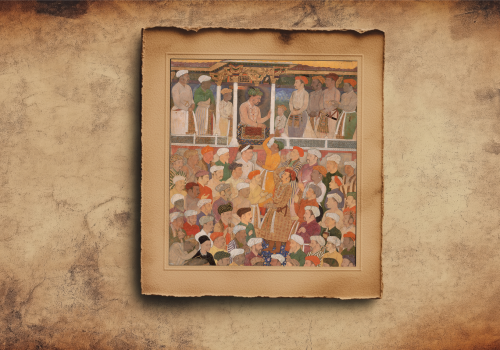RUHILASIKH RELATIONS. The Ruhilas came from the Yusafzai tribe of Afghans originally belonging to Roh, a tract of land south of Chitral in the North-West Frontier region. They established themselves in the early years of the eighteenth century as a semi independent power in the district lying between the River Ganges and the Kumaon hills and extending eastwards up to Shahjahanpur. Their first powerful chief, `All Muhammad, received from the Emperor Muhammad Shah a mansab or rank of the 4,000 grade and was appointed faujdar of Sirhind in 1745. Ala Singh, the founder of Patiala state, made alliance with him and joined him in a campaign against the Muslim chief of Raikot.
But `Ali Muhammad suddenly attacked Ala Singh`s capital, Barnala, which was given over to plunder. Ala Singh himself was taken prisoner and detained in the Fort of Sunam, but he escaped through a stratagem in 1747. `Ali Muhammad died in September 1748. The next great leader of the Ruhilas was Najib Khan who started life as a foot soldier under `Ali Muhammad, but rose in rank soon after his master`s death. He received from the Mughal Emperor `Alamgir II the mansab of 5,000 zo
References :
1. Bharigu, Ratan Singh, Prachin Panth Prakash. Amritsar, 1914
2. Gian Singh, Giani, Twankh Guru Khalsa [Reprint]. Patiala, 1970
3. Ganda Singh, Sardar Jassa Singh Ahluvalia. Patiala, 1969
4. Gandhi, Surjit Singh, Struggled/the Sikhs for Sovereignty. Delhi, 1980
RUHILA-SIKH RELATIONS The Ruhilas, originating from the Yusafzai tribe of Afghans, hailed from Roh, a region south of Chitral in the North-West Frontier. In the early eighteenth century, they established themselves as a semi-independent power in the district between the River Ganges and the Kumaon hills, extending eastward to Shahjahanpur. Their first prominent leader, Ali Muhammad, was granted a mansab (rank) of the 4,000 grade by Emperor Muhammad Shah and was appointed faujdar of Sirhind in 1745.
Ala Singh, the founder of the Patiala state, allied with Ali Muhammad in a campaign against the Muslim chief of Raikot. However, Ali Muhammad unexpectedly attacked Ala Singh’s capital, Barnala, plundering it. Ala Singh was captured and imprisoned in the Fort of Sunam but managed to escape through a clever stratagem in 1747. Ali Muhammad passed away in September 1748.
The next significant Ruhila leader was Najib Khan, who began his career as a foot soldier under Ali Muhammad but quickly rose in rank after his master’s death. He was granted the mansab of 5,000 by Mughal Emperor Alamgir II.






